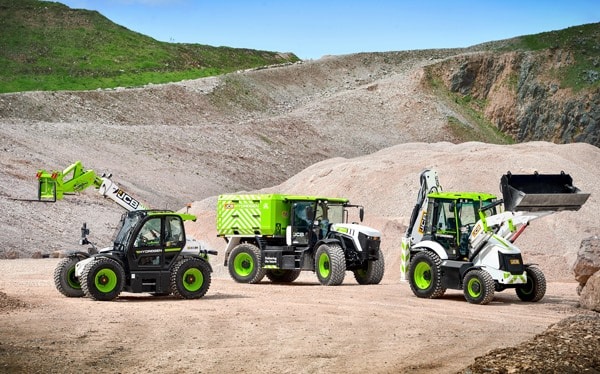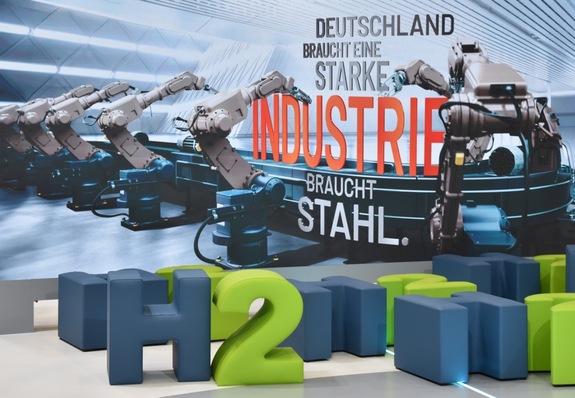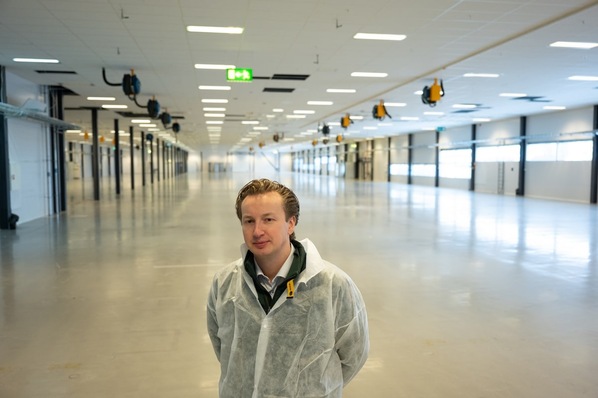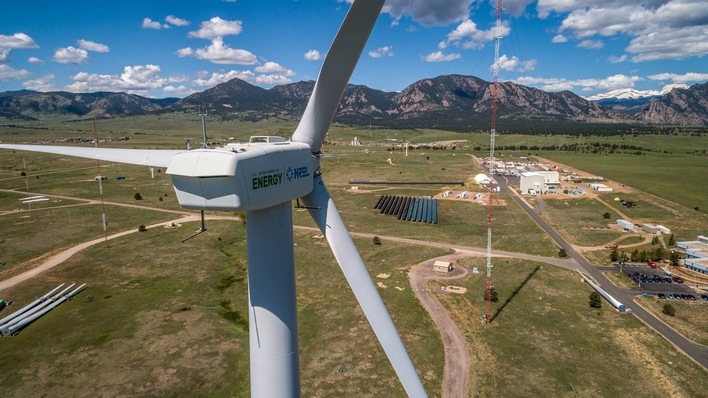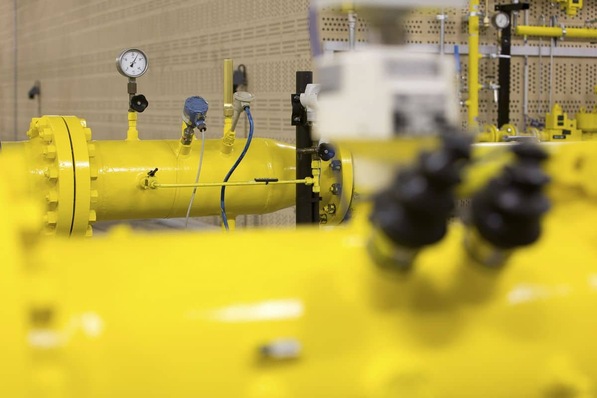In March, British manufacturer of agricultural and construction equipment JCB announced the production of its 50th hydrogen combustion engine as part of the company’s drive toward net-zero. Still at the pre-series stage, the engines will be used for further testing and development. So far the technology has been demonstrated in working prototypes of a backhoe loader and a telescopic handler as well as fitted in a truck. The pace of innovation is certainly remarkable, especially considering the company only switched its focus away from batteries and fuel cells in 2020.
J.C. Bamford Excavators Limited, aka JCB, was started by Joseph Cyril Bamford in Staffordshire, England, in 1945. Still in family hands, it is overseen by the current chairman, Lord Anthony Bamford, the founder’s son. The company has become one of the world’s largest manufacturers of construction and farming machinery, with 22 production facilities on four continents. As part of its decarbonization efforts JCB is investing GBP 100 million in hydrogen technology. However, the company didn’t set out to create a hydrogen internal combustion engine initially. At first the emphasis was on diesel efficiency in order to cut fuel consumption and meet regulations on tailpipe emissions. But JCB customers wanted more.
Battery electric
In 2018, JCB launched its first electric product, a mini excavator, in response to customer demands for a zero-emission machine that could work indoors and in noise-sensitive urban areas. The technology was rolled out to 14 models. As Tim Burnhope, Chief Innovation and Growth Officer at JCB, put it: “We were a bit naive and we thought we could just put batteries on everything.” While small compact products worked well in battery electric format, meeting the power requirement of medium and heavy equipment would mean more batteries. This would dramatically increase the weight and expense of the machine, and the recharging time would decrease working hours. The takeaway: batteries don’t scale. JCB needed to reduce the weight, the cost and the charge time.
Other fuels were considered as a replacement for diesel, namely biomethane, e-fuels, ammonia and hydrotreated vegetable oil or HVO. That said, each fuel type had drawbacks, including high fuel cost, carbon content, toxicity, smell and issues around crop use for fuel rather than food.
Fuel cells
Thoughts turned to hydrogen and, being the only technology available to JCB at the time, the fuel cell. In 2019 came the first prototype of a fuel cell excavator, with its second iteration – equipped with a bigger fuel cell and better batteries – following in 2020 (see fig. 1). However, the costs of the fuel cell, the DCDC converter and the power batteries made the power system eight times more expensive than a diesel engine. Burnhope summed up the difficulty with fuel cell technology: “It’s too complicated. It’s not robust enough for our industry.” And robustness is key in tough working environments such as quarries or construction sites where equipment is subjected to G-forces, tarmac and paint fumes, and dust. Another concern was the availability of fuel cells. JCB’s two engine production plants in the UK and India each build up to 250 engines a day and questions remained about whether fuel cell suppliers would cope with the volumes needed.
Chairman’s challenge
While convinced that hydrogen was the zero-emission fuel it was looking for, JCB had reached a crossroads in terms of fuel cell technology. In July 2020, the engineering team presented its findings to JCB Chairman Lord Bamford who then issued the following challenge: to design a hydrogen engine by the winter holidays. On Dec. 7, 2020, JCB had an engine running on hydrogen – the first hydrogen ICE in the industry.
Its development entailed going back to first principles to redesign the combustion process and involved 100 engineers, assisted by the University of Aachen in Germany. Four key areas were investigated: hydrogen mixing, air compression, spark ignition and steam management. One of the challenges of moving from a liquid fuel to a gas was how to achieve a uniform mix of hydrogen and air. Computational fluid dynamics, CFD, was used to visualize the mixing in the cylinder. In doing so the development team realized the hydrogen combustion process could be very lean in terms of air-to-fuel ratio, with minimal hydrogen required. Another noticeable difference is the pressure – diesel injection occurs at 2,000 bar whereas hydrogen injection is at around 10 bar. JCB also discovered that hydrogen can be combusted at a much lower temperature than other fuels, though the precise temperature used in its new hydrogen combustion engine is being closely guarded by JCB.
The result is a four-cylinder engine with a port injection system (see fig. 2). It has exactly the same torque, efficiency and power ratings as its diesel counterpart and is designed to be used interchangeably in existing machines. The sole modification to the machine itself is the replacement of the diesel tank with hydrogen tanks on the side. The hydrogen ICE can also be manufactured with readily available components. Thus a further advantage over fuel cells is that the machine can be repaired on the job site.
JCB hydrogen ICEs are already powering prototype backhoes and telescopic handlers (see fig. 1, left & right), distinguished from their diesel counterparts by new green-and-white livery rather than JCB’s traditional yellow. The hydrogen ICE has also been fitted in a 7.5-metric ton Mercedes truck to demonstrate that it could be done and to show the technology works well in a truck. In terms of future production, Ryan Ballard, Engineering Director for Powertrain at JCB, was unable to specify targets but said “we are ambitious for it.” The hydrogen test engines were built on the same production lines as their diesel engines. Therefore it would be possible to build up to 250 hydrogen engines a day but the demand is not yet there, H2-international was told.
Hydrogen on the go
A particular feature of the construction and agricultural industries is delivery of diesel to the work site in a mobile refueling bowser. JCB has therefore recently developed its own hydrogen refueller (see fig. 1, middle). The bowser carries 100 kilograms at 500 bar. This is enough to fill 16 hydrogen backhoes where the hydrogen is stored at 350 bar, with 1 kilogram of hydrogen roughly equivalent to 3 kilograms of diesel. The refueller can be transported either on the back of a modified Fastrac tractor or on a trailer. The refueling nozzle is supplied by the company WEH and fill-up time is only a matter of minutes.
When it comes to hydrogen sourcing, JCB’s testing facility is being supplied by Ryze Hydrogen which sends deliveries via tube trailer. On a recent visit by H2-international, the hydrogen used was a byproduct of a chlorine manufacturing process in which salt water is split via electrolysis. According to JCB, the aim, however, is to move toward green hydrogen. When asked about the import deal that JCB and Ryze Hydrogen agreed with Australia’s Fortescue Future Industries or FFI in 2021, Ballard explained that this was due to nervousness in the market about the reliability of hydrogen supply. The import of hydrogen from Australia would probably take the form of ammonia that would be cracked back into hydrogen.
Looking ahead, JCB remains “optimistic” about future rules on zero-emission vehicles and is closely following changes in regulations for cars and especially trucks. Developments in trucking regulations could, it believes, give an indication as to what may be coming later down the line for construction and agricultural machines.
Family values
Interest in hydrogen is a family affair. The JCB chairman’s son, Jo Bamford, is the owner of Northern Ireland company Wrightbus which has been manufacturing fuel cell buses since 2016. He is also the founder of Ryze Hydrogen which offers hydrogen transportation, distribution and infrastructure services in the UK.
Nicola Bottrell Hayward
Source: JCB


